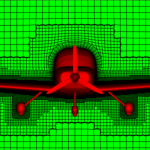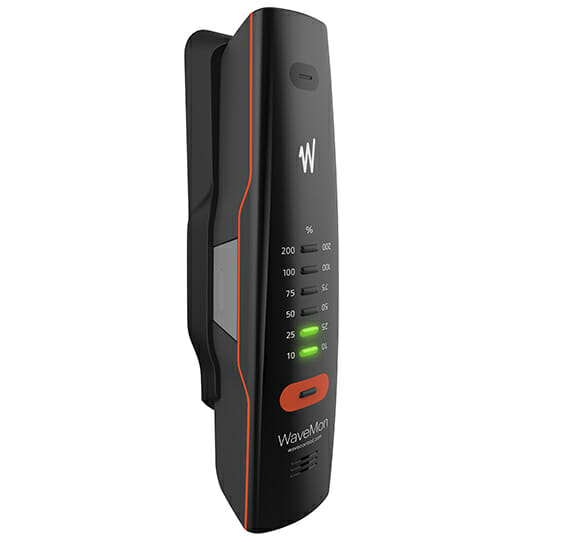Throughout the decades and increasingly today, design and electrical engineers, OEMs, metal suppliers and fabricators worldwide refer to mumetal as the industry standard. Professionals may use the mumetal name as a generic term but not realize that it is in fact a registered trade name. MuMETAL®, a high nickel content alloy specified for low-frequency shielding applications, is used to resolve electro-magnetic interference (EMI) problems. “Engineers understand that proper material selection is crucial and care must be taken to ensure consistency, quality, and shielding efficiency of the materials used for custom shields and production parts as other companies may misrepresent this brand.”, stated Mr. Mark D. Wickler, President and CEO of Magnetic Shield Corporation.
The mumetal formulation and exacting spec provides maximum magnetic permeability or the highest degree of shielding for use in most electrical and electronic applications implemented today by OEMs, government and national labs, R & D and private laboratories, as well as scientific and medical universities. Across a wide array of industries and markets such as automation, robotics, aerospace, aviation, automotive, communications, hand-held devices, IoT technology, medical, scientific, R & D, and OEMs, design and electrical engineers face challenges of increased complexity when creating new product design drawings for all types of electronic device and component layouts. Designers often encounter problems with densely packed electronic assemblies that have internal components interfering with each other. When the electromagnetic interference (EMI) includes low frequency fields (30 to 300 Hz), magnetic shielding is essential to assure proper operation of the electronic equipment without failure. Engineers must also design and manufacture products, equipment, machinery, devices, parts, and instrumentation to meet applicable regulations or standards. Because MuMETAL is an industry reference material with different characteristics than proprietary alloys, when the specification or the application calls for a magnetically soft or high permeability material, mumetal can frequently be successfully applied.
One of the most important design questions is whether the source field is internal or external, and which field is most economical and practical to shield. Internal interference is created by designed-in components located within a circuit, system, enclosure, piece of equipment or room. External interference or the H-field source is created by unwanted nearby fields radiating from power lines, circuits, electrical enclosures, transformers, electro-magnetic machinery and the earth’s magnetism. Secondly, should the source of interference or the sensitive device be shielded? The answer to this question depends on several factors. Shielding the source may involve stronger fields, and therefore thicker materials. All interference sources must be shielded, or the sensitive device will still be affected. The usual approach is to shield the sensitive device. This prevents interference from both present and future sources. A hands-on approach to solving a shielding problem can be accomplished with the use of a lab kit, testing, and prototyping.
Mr. Wickler also spoke about the importance of continued lab testing, “Over several decades, we have performed hundreds of laboratory tests and calculated thousands of shielding equations—all in an effort to continually validate the theoretical application of magnetic interference control in both AC and DC applications, and to aid engineers in shield design. A documented and effective reference tool, the B-H curve chart depicts the material capabilities to attenuate and absorb a wide range of magnetic fields.”
Shielding efficiency is a result of material composition, specific gravity, thickness, grain structure within the alloy, and hardness. Material selection will depend on the strength of the unwanted field (Ho) and the amount of field attenuation required. MuMETAL is the preferred solution because of its reliable performance for reducing low-frequency electromagnetic interference (EMI). Available as stress annealed (partially annealed for ease of machinability) sheet stock, it is used for fabricated shields such as enclosures, cylinders, cans, channels or 3-D boxes. Complex cylindrical shaped shields are the most efficient for redirecting and reducing magnetic fields.
Typically, hydrogen atmospherically controlled perfection annealing or final annealing is required after stamping, machining, bending, rolling, severe forming or welding, and is crucial in relieving material stress and developing the alloy’s maximum shielding performance. The perfection annealed fabricated shields and parts are then tested at our in-house quality control lab to certify that the demanding specifications are met.
Located in the USA Chicago metro area, Magnetic Shield Corporation has been a leader in the custom shielding fabrication market, manufacturer, and supplier for over 75 years; providing expertise and engineering consulting on thousands of projects, applications and shielding designs. For more information regarding our proprietary shielding alloys and forms available, wiring and cable shielding, Zero Gauss Chambers, and modular MuROOMS view our websites here www.magnetic-shield.com, or www.mu-metal.com.










